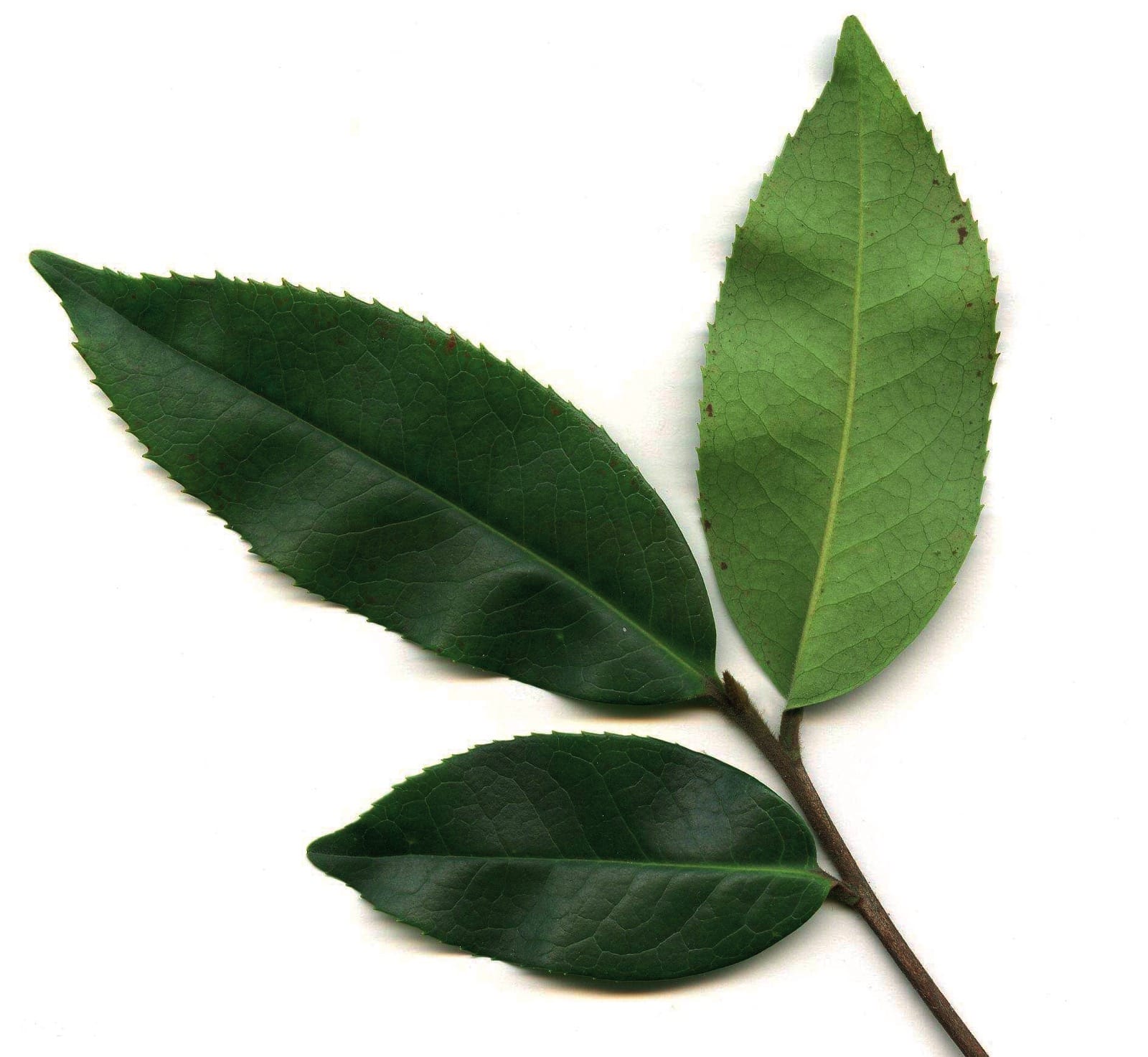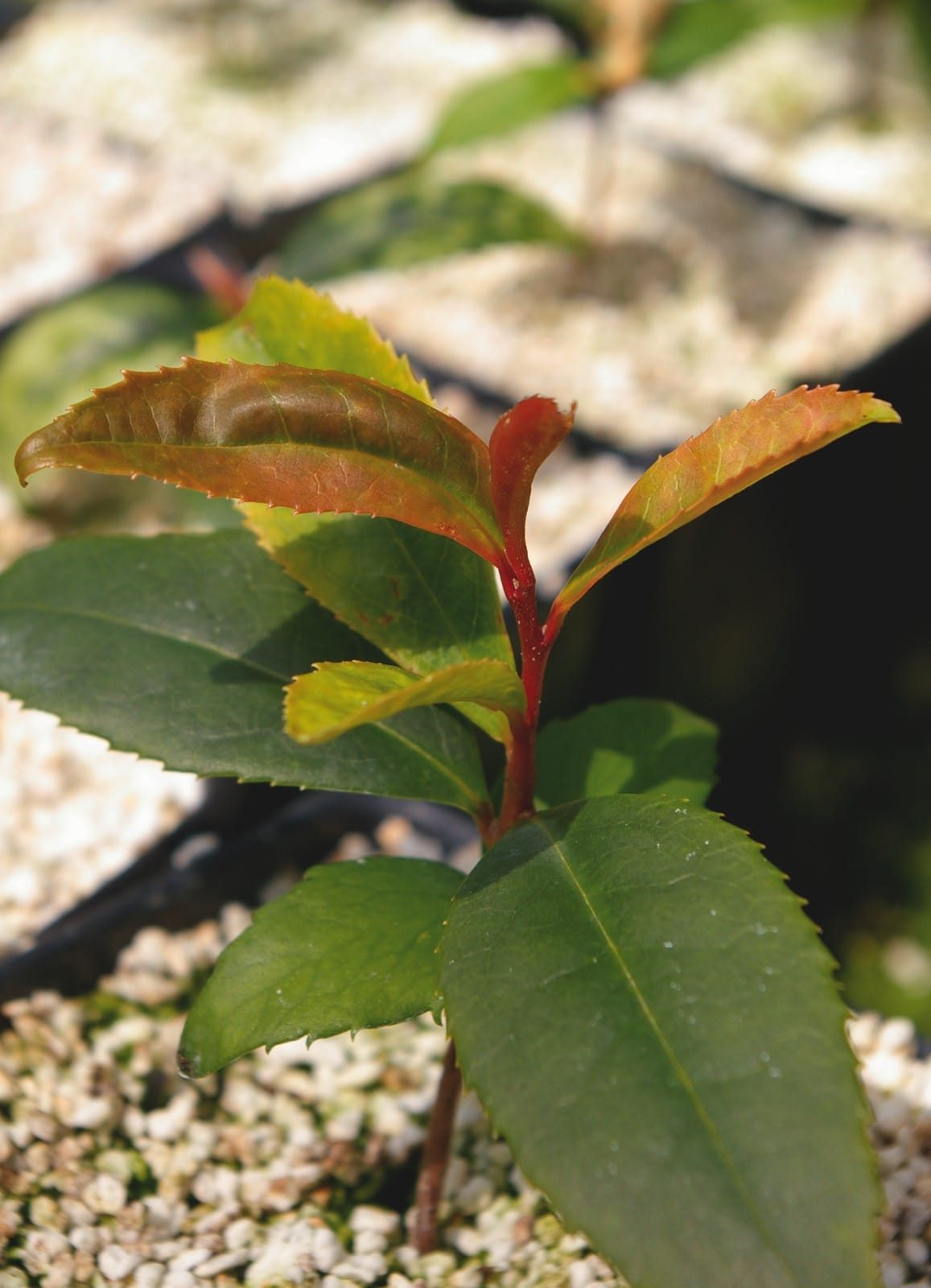Pyrenaria spectabilis
Credits
Article from New Trees by John Grimshaw & Ross Bayton
Recommended citation
'Pyrenaria spectabilis' from the website Trees and Shrubs Online (treesandshrubsonline.
Genus
Synonyms
- Camellia spectabilis Champ.
- Tutcheria spectabilis (Champ.) Dunn
Other taxa in genus
Tree 5–15 m. Branchlets yellowish brown to greyish brown, finely pubescent, though quickly glabrous. Leaves leathery, 16–18 × 4–7 cm, oblong, upper surface green to yellowish green, shiny and glabrous, lower surface pale green, sparsely pubescent, 12–16 secondary veins on each side of the midrib, margins serrate and undulate, apex acuminate; petiole 0.5–1 cm long. Flowers axillary or subterminal, solitary, 6–10 cm diameter; pedicel 0.2–0.6 cm long, pubescent. Bracteoles two, 1–1.5 cm long, yellow-pubescent outside; sepals 9–11, 2–3(–4) cm long, thick, yellow-pubescent outside; petals five to six, white, broadly obovate, 4–5 cm long; stamens numerous, ~1.5 cm long. Capsule woody, globose to subglobose, 4–8 cm diameter, densely yellow-tomentose. Flowering May to June, fruiting August to October (China). Ming & Bartholomew 2007. Distribution CHINA: southern Fujian, Guangdong, Guangxi; VIETNAM. Habitat Broadleaved, evergreen forest, between 300 and 1500 m asl. USDA Hardiness Zone 9. Conservation status Not evaluated. Illustration NT24, NT682.
Pyrenaria spectabilis has been in cultivation for a long time, possibly from material collected in the vicinity of Hong Kong, but was treated as a tender glasshouse plant in the British Isles (Chittenden 1951), and seems to have ‘hung on’ in obscurity in a few collections. In Australia and New Zealand, however, it is more widely grown (T. Hudson, pers. comm. 2005), and seed from these countries has been the source of more recent accessions in the United Kingdom, where it is now commercially available. Small specimens growing in a sheltered site outside at the Ghent Botanical Garden in Belgium, accessioned in 2000, were grown from seed obtained by Damien Devos from the Kunming Botanical Garden (J. De Langhe, pers. comm. 2008). These suggest that it is worth attempting beyond the mild coastal extremities of Europe. Pyrenaria spectabilis is potentially a fine evergreen, with attractively pinkish red new shoots. Its big fried-egg flowers are produced in autumn, but plants will require a warm sheltered site for this to occur.


